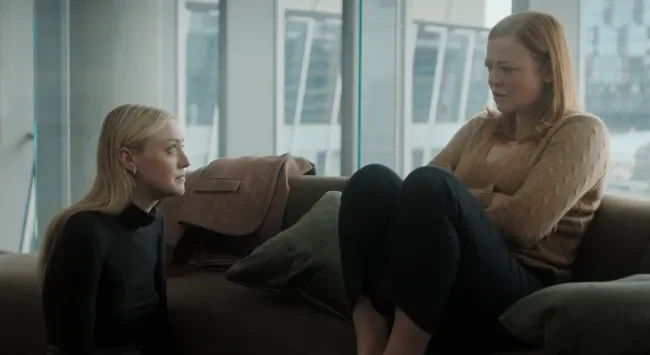How ‘All Her Fault’ director Minkie Spiro crafted one of TV’s most twisted mysteries

For director and executive producer Minkie Spiro, her interest with her latest project, Peacock’s All Her Fault, started with the ending. The TV vet, whose credits include Better Call Saul and Downton Abbey, had a feeling she wanted to be a part of the adaptation of Andrea Mara‘s novel once she got to the final twist, but once she met with series creator Megan Gallagher, she knew she had to sign on.
Spiro joined Gold Derby for its “Meet the Experts: Spotlight” interview series with television directors to discuss how the show came together and how the creative team managed to maintain the mystery when moving the story from the page to the screen.
Gold Derby: How did you come aboard the project originally?
Minkie Spiro: It came to me via Carnival Films, the production company in London who I’d worked with previously on a few seasons of Downton Abbey. I respect their taste tremendously. They sent me the book and talked to me about their aspirations for the show. When I read the book, I was totally blindsided in a good way by the big twist at the end. Then I had a meeting with Megan Gallagher, the showrunner, creator, adapter, and we got on brilliantly. I respected and got excited by her take on where she wanted to go with the adaptation, so it felt like a no brainer after that.
How did you both see the book developing into the show we would eventually see?
Book adaptations are tricky at the best of times. This show was given a head start by the fact that the twist at the end is so brilliant that I felt quietly confident that structurally we had something interesting to play with. When Megan and I started to talk more about where we wanted to go with the adaptation, what we both felt as working mums is that there was this undercurrent of a social commentary that we wanted to inject into it. It was going to be this wonderful, nail-biting thriller, but there was going to be a kind of digging in, scratching away at this disparity primarily in heterosexual relationships between working parents, with the mum seemingly always expected to do the heavy lifting when it comes to childcare and forms and vaccinations.
Did that approach to a domestic thriller change how you worked with the actors and how these performances were modulated?
In a way, yes. One of the trickiest things on this show is Sarah Snook‘s character, Marissa, because she’s sitting in trauma. We hit the ground running within the first 30 seconds. She rings the doorbell, and her child is not at this play date. So we worked very closely with Sarah to come up with an arc that doesn’t feel one note or too extreme that doesn’t feel repetitive. We had some long intimate discussions about how we were gonna navigate Marissa’s journey. It also meant that she was gonna have to adapt because I did a lot of tighter shots where you could just feel her pain. It was a very intense way of capturing certain moments.
With a mystery show, especially one that’s as twisty as this one, so much of the intrigue is built into the writing and the scripts. I’m curious from a directing point of view, how do you shoot a mystery in a way that feels honest to the moment, but also withholding the full truth of what’s going on?
I always start from a place of truth, so for me, it’s about making sure that the performances are grounded. Obviously there’s this propulsive engine with a mystery, and so a lot of that also happens as an EP in the edit. In post-production, it’s about pulling certain threads, knowing when to release it, when to sew it back in. And you don’t always know until you’re creating that tapestry how much you want to lean into a certain moment, or you want to go back into character, or the engine needs a bit more foot on the gas. So it’s such a delicate balance.
This article and video are presented by Peacock.



